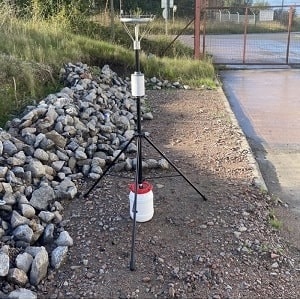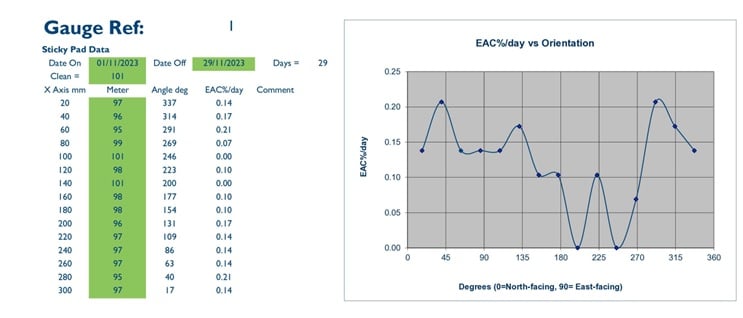UK Wide
We provide sampling and consultancy services throughout the UK and Ireland
Affordable
We are happy to provide you with an obligation free estimate for work
How it works
With Synergy Environmental Solutions Your Environmental Dust Monitoring is in Safe Hands
Environmental Dust Monitoring
Environmental dust monitoring is the practice of measuring and analyzing airborne particles in various settings. It plays a crucial role in safeguarding public health, ensuring regulatory compliance, and protecting the environment.
What is environmental dust?
Environmental dust refers to tiny particles of solid matter suspended in the air in outdoor environments. These particles can originate from various sources, both natural and human-made. Common components include soil particles, pollen, spores, minerals, and also organic matter. Additionally, human activities contribute to the presence of particulate in the environment. Such as vehicle emissions, mineral processing, construction activities, demolition projects, agricultural activities and the burning of fossil fuels.
Types of Environmental Dust Monitoring
Frisbee Gauge monitoring
Frisbee gauges are a simple yet effective tool for measuring environmental dust deposition rates. Shaped like its namesake, it has a metal wire bird guard to ensure that birds do not contribute to the matter collected. The device has a large collection bottle connected to the frisbee and the whole assembly is mounted on to a sturdy tripod. This trusty collector passively traps settling particulates over a designated period, typically a month. Mounted securely at eye-level (around 1.7 meters), the gauge relies on nature’s help – rain washes the collected particulate into the waiting bottle below. Later, lab analysis of the captured material reveals its quantity and composition, painting a picture of local air quality. While not capturing real-time data, frisbee gauges offer a cost-effective and straightforward way to measure dust deposition, making them valuable allies in monitoring efforts around the globe.

Directional Monitoring

Beyond simply measuring the quantity of particles in the air, understanding its origin is also crucial for effective mitigation strategies. This is where directional gauges shine. These devices depart from the straightforward approach of passive collectors, actively capturing material based on wind direction. The devices employed by synergy use a sticky pad that is mounted around a cylinder. The sticky pad is oriented in a precise way, so that when it’s removed it gives a 360 degree indication of which direction the material has come from. By analyzing the collected material from each part of the sticky pad, Synergy can pinpoint the dominant wind-borne dust sources, empowering targeted interventions. Directional gauges are particularly valuable in construction zones, demolition sites, and industrial areas, where pinpointing origin is critical for compliance and community protection. While requiring more complex analysis compared to passive gauges, their directional insight makes them invaluable tools in deciphering the environmental puzzle.
Analysis of material collected.
As well as finding deposition rates and directional analysis Synergy can also analyse the resultant material from the sampling for its metal content or its respirable crystalline silica content. This can further define its potential health effects or pin point more directly the industrial processes causing it.
Why is monitoring environmental dust important
Health Issues
Monitoring dust in the environment is crucial for several health reasons. Firstly it can cause Respiratory issues. To clarify, Fine particles can penetrate deep into the lungs, causing irritation, inflammation, and respiratory illnesses like asthma, bronchitis, and chronic obstructive pulmonary disease (COPD). It can also cause cardiovascular problems by increasing inflammation and damaging blood vessels. Other health problems may occur because different types of dust may contain harmful chemicals or allergens, leading to other health problems like skin irritation, eye problems, and even cancer.
Ecosystems
High levels of environmental dust can cause reduced air quality. Causing a decrease in visibility and therefore potential harm to sensitive ecosystems by blocking sunlight and affecting plant growth. It can also cause water contamination, because it can settle on water bodies, carrying pollutants and affecting aquatic life. In addition dust deposition can alter soil chemistry, impacting plant and animal life dependent on specific soil conditions.
Applications for Environmental Dust Monitoring
Environmental dust monitoring can be used around construction sites, demolition projects, industrial facilities, agricultural practices, and air for quality studies. Furthermore, dust monitoring plays a crucial role in various settings, ensuring compliance, safeguarding health, and informing environmental management:
Construction and demolition projects use monitoring for:
- Compliance with regulatory limits on dust emissions.
- Protecting the health of workers and nearby communities from respiratory issues.
- Optimizing suppression measures, reducing costs and environmental impact.
- Identifying the effectiveness of control methods like watering and wind barriers.
- Dust from Industrial Facilities.
Reasons industry use environmental dust monitoring:
- Meeting stringent air quality standards set by regulatory bodies.
- Ensuring worker safety and reducing occupational health risks.
- Monitoring fugitive particulate emissions from various processes like grinding, blasting, and material handling.
- Tracking dust generated by transportation activities within the facility.
Agricultural Practices: - Assessing the impact of wind erosion on soil health and productivity.
- Minimizing dust drift onto neighboring properties and communities.
- Evaluating the effectiveness of suppression techniques like cover crops and windbreaks.
- Understanding the impact of agricultural activities on overall air quality in the region.
Air quality studies use monitoring for:
- Mapping regional patterns of dust concentrations and identifying sources.
- Assessing the impacts on visibility, public health, and ecosystems.
- Evaluating the effectiveness of air quality improvement strategies.
- Providing data for modeling and predicting dispersion patterns.
- Environmental Dust from Mining operations, such as blasting, hauling, and processing activities.
- Traffic management: Consultants use it for assessing the impact of vehicle emissions on dust levels near roadways.
Further Information is available below
Health and safety for major road schemes: control of dust
Guidance on Monitoring in the Vicinity of Demolition and Construction Sites

Available COSHH services
We’re happy to answer any questions you have, or provide you with an obligation free estimate for work. Just send us a message!
01782 614236 or [email protected]
Workplace Air Monitoring
LEV Testing
COSHH Regulation 9
Breathing Air Testing
Face Fit Testing
Workplace Noise Monitoring
Hand Arm Vibration
Whole Body Vibration
Get in touch
Contact
Synergy Environmental Solutions provide
sampling and consultancy services
throughout the UK and Ireland
We’re happy to answer any questions you have,
or provide you with an obligation
free estimate for work.
Just send us a message!
Email: [email protected]
Tel: 01782 614236



